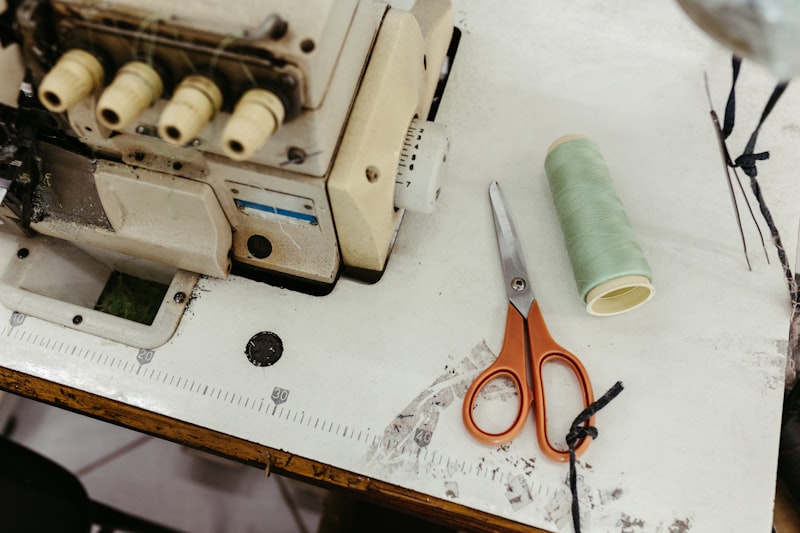Essential Sewing Shortcuts for Wedding Dresses
Essential Sewing Shortcuts for Wedding Dresses
Wedding dresses are one of the most cherished garments in a woman's life, symbolizing love, commitment, and the excitement of a new beginning. However, sewing a wedding dress can be intimidating for both novice and experienced sewists. This article delves into essential sewing shortcuts for wedding dresses, making the process smoother and more enjoyable.
Understanding the Basics of Wedding Dress Sewing
Before diving into the shortcuts, it’s vital to understand the fundamentals of sewing a wedding dress. Here are some key aspects to consider: fabric types, pattern selection, fitting, and finishing techniques. By mastering these basics, you set the stage for successful sewing.
Popular Fabric Choices
The fabric choice is crucial for creating a beautiful wedding dress. Common options include:
| Fabric Type | Characteristics | Pros | Cons |
| Satin | Shiny, smooth, and luxurious | Elegant drape | Can be tricky to work with |
| Tulle | Lightweight and airy | Adds volume and structure | Fragile and can fray easily |
| Lace | Delicate with intricate patterns | Romantic appearance | Requires careful handling |
Choosing the Right Pattern
Next up, selecting a pattern that matches your vision is essential. Whether you're going for a classic ball gown or a sleek modern silhouette, the pattern sets the foundation for your dress. Look for patterns rated as "easy" if you're a beginner and ensure they include your size.
Essential Sewing Shortcuts
Now that you have a solid understanding of the basics, let's explore some essential sewing shortcuts that can save you time and hassle during the process.
1. Pre-Wash Fabrics
One of the first shortcuts is to pre-wash your fabric. This step helps to preshrink the material and removes any chemicals or finishes applied during manufacturing. Pre-washing ensures that your finished dress will fit perfectly after washing.
2. Use a Serger
If you have access to a serger, utilize it! A serger creates clean, professional seams and finishes edges simultaneously, saving you time on finishing details. This is particularly useful for sheer fabrics like tulle.
3. Basting Before Sewing
Basting is an invaluable shortcut. Instead of pinning, use a long stitch to baste layers together. This method allows you to make adjustments easily without the hassle of removing multiple pins. It also helps to prevent fabrics from shifting while sewing.

4. Utilize Interfacing
Interfacing can reinforce areas of the dress, like collars and waistbands, giving them more structure. Using fusible interfacing can save time and ensure that these areas hold their shape well without extensive sewing.
5. Quick Hemming Techniques
Hemming can be tedious, but it needn’t be. Consider using a blind hem stitch for an almost invisible finish. This technique is quick and gives a clean look without needing to spend hours hand-sewing.
6. Use Dress Shields
If your dress fabric is prone to sweat stains or you’re looking for additional comfort, consider adding dress shields. These can be sewn inside the bodice or underarms, adding a layer of protection without the time-consuming process of lining the dress entirely.
Decorative Techniques to Enhance Your Dress
Sewing shortcuts can also include decorative techniques that can elevate the overall aesthetic of your wedding dress without a significant investment of time. Here are some ideas:
1. Simple Embellishments
Adding embellishments such as beads or sequins can transform a simple dress into something spectacular. Stick to a few strategic placements for maximum impact without overwhelming the overall design.
2. Use of Appliqué
Appliqué is an efficient way to add texture and complexity to your dress. Cut shapes from fabric and sew them onto your dress in complementary colors. This technique is faster than extensive embroidery work.
Fitting Your Dress
Getting the fit right can make or break the final look of a wedding dress. Here are some shortcuts to perfecting the fit:
1. Use a Dress Form
If you can, invest in a dress form that matches your measurements. This allows you to visualize the dress better and make necessary adjustments during the sewing process.
2. Try on Often
As you sew, make a habit of trying the dress on frequently. This will help you identify any fitting issues early on, avoiding extensive alterations at the end.
Final Touches
After you've sewn the dress, it’s time for those final touches. Consider the following:
1. Pressing
Pressing seams and hems is crucial for a polished look. Use steam to remove any creases and give your dress a professionally finished appearance.
2. Final Inspection
Before your big day, carefully inspect your dress for any loose threads or uneven hems. This final check can help ensure you look perfect as you walk down the aisle.
Conclusion: Shortcuts for a Perfectly Crafted Wedding Dress
Creating a wedding dress might seem like a monumental task, but with these essential sewing shortcuts, you can approach it with confidence and creativity. Remember to choose the right fabrics and patterns, utilize techniques like basting and interfacing, and don’t forget to focus on those final touches. With these tips, you’ll make your wedding dress sewing experience enjoyable and rewarding.
Before you begin, gather all your sewing supplies and plan your project well. Always keep the bride's style and comfort in mind. Happy sewing, and may your beautiful creation bring joy to the special day!
